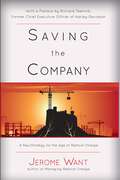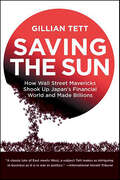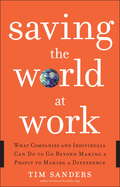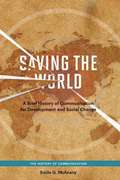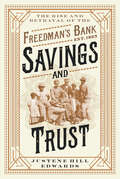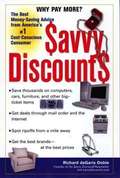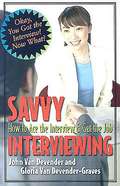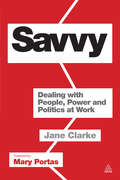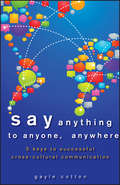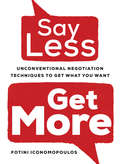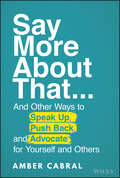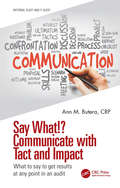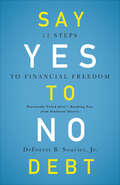- Table View
- List View
Saving the Bureaucracy, Killing the Beast: A Living Manuscript
by Earn SnyderThis book was written for American citizens as a "document they could hold and wave above their heads in the battle for reform. In the hope that the people will no longer be deceived by the two headed beast, Democrat and Republican, that is strangling America financially, capitalizing on the sick and elderly for profit" (book jacket).
Saving the Company: A New Strategy For The Age Of Radical Change
by Jerome WantIn the age of radical change, the usual fads, fix-its, and magic bullets no longer guarantee the success of any business regardless of size or industry. Entire industries, not just companies, are failing as the pace and radical nature of change outstrip the abilities of most companies to anticipate and adjust to rapidly changing competitive conditions. Companies with a track record of sustained success have learned that adapting to change and, even better, creating change, are the most effective tools for ensuring the long term success of a business enterprise. That ability is built on the platform of a high performing, ethical, business organization—culture.Few terms in the American business lexicon are more ignored or misunderstood than corporate culture. Nevertheless, we see each day in business headlines the announcement of one failed or failing company after another, almost always due to a failed business culture. The inability to build and maintain high performing business organizations and leadership teams, as a strategy for dealing with radical change, has ruined the careers of many senior business leaders, forced countless lost jobs and careers, as well as the loss of market share and shareholder value. Unlike any other book, Saving the Company demonstrates how a business enterprise’s culture can become its strongest resource for managing and creating change. The book is written around the author’s proprietary Business Change Cycle and Hierarchy of Organization Performance as critical roadmaps for better understanding business culture as the critical tool for managing and creating change in an increasingly unpredictable and turbulent business world. By presenting case studies and examples from today’s business world, the book also provides unique insights into the different kinds of business cultures that exist with specific strategies for improving performance. The book gives special attention to what leadership needs to do to support the change process for building high performing business organizations.
Saving the Family Cottage
by Stuart HollanderNow published by Nolo, Saving the Family Cottage is written in plain English by estate planning and succession attorney-experts Stuart Hollander and David S. Fry, to help you plan to pass on your vacation home and keep it in the family. Complete with real-world examples and stories of cottage "wars" gone awry, this book breaks down the essentials for passing your cottage to the next generation. Find out how to: -figure out which estate planning entity is right for you and your family -develop a cottage schedule -deal with co-owners who fail to pay their assessments -decide whether to establish an endowment -allocate control between and within generations of owners Although the term "cottage" is used throughout, the practical advice from the authors applies to any property that a family wants to retain. With information for owners, attorneys and financial planners, this guide to succession planning makes a complex problem understandable and offers concrete solutions to what can be a delicate family matter. This edition acknowledged the addition of Attorney David S. Fry as an author of the book and successor to the author's cottage law practice. The updated edition is now published by Nolo and has been revised to include the latest state and federal rules that apply to vacation home owners, including fully up-to-date estate tax information.
Saving the Family Cottage: A Guide to Succession Planning for Your Cottage, Cabin, Camp or Vacation Home
by David S. Fry Attorney Rose Hollander Stuart Hollander AttorneyWhether you’re a parent planning to pass on a cottage to your children, someone who has inherited a cabin with your siblings or other relatives, or someone who is thinking about buying a vacation home, you want to know how to keep the property in the family—and avoid squabbles over it. This book tells you how. You’ll find out how to: Prevent a family member from forcing a sale of the cottage. Keep your cottage out of the hands of in-laws and creditors. Develop a legal structure to take care of the business of ownership, freeing you and your family to enjoy your precious time at the cottage. Make a smooth transition from one generation’s ownership to the next. Saving the Family Cottage explains the problems that almost always pop up when family members with different interests and financial situations inherit a vacation home together. And it offers solutions for families who want to preserve this valuable asset for generations to come.
Saving the Market from Itself
by Christopher MitchellThe 2007–9 financial crisis threatened economic disaster on a scale not seen since the Great Depression, but rapid state action prevented the widely feared devastation. The German response was considerably more generous to banks than the American or British bailouts. Drawing on interviews and primary sources in government, private firms, and media, Mitchell explains how the structure of national financial systems and interbank relationships produced extensive private rescues and pressure on different states. Mitchell explores the different responses and results in Germany, the UK and the US using a combination of detailed case study analyses of the three countries' responses to the crisis and a quantitative analysis of patterns of state responses to financial crises. This book will be essential reading for scholars and advanced students of political economy, comparative politics, economic sociology, economics, and public policy.
Saving the Media: Capitalism, Crowdfunding, and Democracy
by Arthur Goldhammer Julia CageJulia Cagé explains the economics and history of the media crisis and offers a solution: a nonprofit media organization, midway between a foundation and a joint stock company, supported by readers, employees, and innovative financing such as crowdfunding. Her business model is inspired by a central idea: that news, like education, is a public good.
Saving the Sun: How Wall Street Mavericks Shook Up Japan's Financial World and Made Billions
by Gillian TettSaving the Sun tells the story of the world's largest private equity deal where American investors made billions of dollars rehabilitating Shinsei, a failed Japanese bank. Within that business saga is the dramatic tale of Japan's brightest financial minds, the men who made the Japanese economic miracle come to life, and their struggle against the economic failure in the 1990s. Into this climate of despair, where Japan seemed incapable of reviving prosperity, came a group of wily and determined Americans who would discover just how different the Japanese really are.
Saving the World at Work
by Tim SandersEven the actions of a single person can help to change the world. How? Through simple acts of leadership and compassion. Open up this book, and discover the true stories of people whose actions have caused a chain reaction at work and in their communities. Among them: A manager who gives an employee some supportive praise, and as a result literally saves his life (page 231). A small group of bank tellers who spearhead a movement to raise millions of dollars for breast cancer, making it the biggest fundraiser in North America, and enhancing their company’s reputation (page 213). A sales manager who gets a copy of a groundbreaking book that leads to a transformation of the company’s operations. As a result, hundreds of millions of pounds of carpet waste avoid the landfill, and the company sparks a revolution in its industry (page 12). A “responsibility revolution” is shaking up corporate America. In this provocative and insightful book, bestselling author Tim Sanders reveals why companies must to go beyond making a profit and start making a difference. Every one of us, regardless of title or position, can inspire our companies to change the way they do business, helping them to become a positive force for enriching people, communities, and the environment. When this happens, not only do we help save the world, we help save our companies from becoming irrelevant. We also become part of what Sanders calls the Responsibility Revolution. Companies that don’t participate in this revolution risk becoming obsolete. Today customers, employees, and investors are demanding that companies focus on their social responsibilities—not just their bottom lines. Sixty-five percent of American consumers say they would change to brands associated with a good cause if price and quality were equal; 66 percent of recent college graduates will not work for companies with poor social values. And more than sixty million people are willing to pay a premium for socially and environmentally responsible products. In SAVING THE WORLD AT WORK, Tim Sanders offers concrete suggestions on how all of us can help our companies join the Responsibility Revolution. Drawing on extensive interviews with hundreds of employees and CEOs, and illuminated by countless stories of people who are making a difference in the workplace and in the world, Sanders offers practical advice every individual and company can use to make the world a better place--now and in the future.
Saving the World: A Brief History of Communication for Devleopment and Social Change
by Emile G. McananyThis far-reaching and long overdue chronicle of communication for development from a leading scholar in the field presents in-depth policy analyses to outline a vision for how communication technologies can impact social change and improve human lives. Drawing on the pioneering works of Daniel Lerner, Everett Rogers, and Wilbur Schramm as well as his own personal experiences in the field, Emile G. McAnany builds a new, historically cognizant paradigm for the future that supplements technology with social entrepreneurship. McAnany summarizes the history of the field of communication for development and social change from Truman's Marshall Plan for the Third World to the United Nations' Millennium Development Goals. Part history and part policy analysis, Saving the World argues that the communication field can renew its role in development by recognizing large aid-giving institutions have a difficult time promoting genuine transformation. McAnany suggests an agenda for improving and strengthening the work of academics, policy makers, development funders, and any others who use communication in all of its forms to foster social change.
Savings and Loans and the Mortgage Market
by Robert C. Merton Alberto MoelProvides a brief overview of the history of the savings and loans, the savings and loans crisis of the 1980s and 1990s, and the creation of the mortgage markets in the United States. Also explains briefly the most common types of mortgage-backed securities available.
Savings and Trust: The Rise and Betrayal of the Freedman's Bank
by Justene Hill EdwardsA leading historian exposes how the rise and tragic failure of the Freedman’s Bank has shaped economic inequality in America. In the years immediately after the Civil War, tens of thousands of former slaves deposited millions of dollars into the Freedman’s Bank. African Americans envisioned this new bank as a launching pad for economic growth and self-determination. But only nine years after it opened, their trust was betrayed and the Freedman’s Bank collapsed. Fully informed by new archival findings, historian Justene Hill Edwards unearths a major turning point in American history in this comprehensive account of the Freedman’s Bank and its depositors. She illuminates the hope with which the bank was first envisioned and demonstrates the significant setback that the sabotage of the bank caused in the fight for economic autonomy. Hill Edwards argues for a new interpretation of its tragic failure: the bank’s white financiers drove the bank into the ground, not Fredrick Douglass, its final president, or its Black depositors and cashiers. A page-turning story filled with both well-known figures like Abraham Lincoln, Frederick Douglass, Jay and Henry Cooke, and General O. O. Howard, and less well-known figures like Dr. Charles B. Purvis, John Mercer Langston, Congressman Robert Smalls, and Ellen Baptiste Lubin. Savings and Trust is necessary reading for those seeking to understand the roots of racial economic inequality in America.
Savvy Discounts: The Best Money-saving Advice From America's #1 Cost-conscious Consumer
by Richard Degaris DobleSavvy shoppers can get the very best for the lowest possible price - all from reputable dealers who stand behind their merchandise. This comprehensive book is packed with how-to advice, entertaining stories, and tips to guide readers through the entire shopping experience-from what you need to know before stepping into a shop to what you should do after the sale. With hundreds of ingenious money-saving ideas, this is the perfect guide for every aspiring smart shopper.
Savvy Interviewing
by John Van Devender Gloria Van Devender-GravesThe insider's guide to the corporate hiring process- Savvy Interviewing-features interview Dos and Don'ts that could make or break you in two minutes flat. Think you already know? Read on and find out from two Human Resource experts: What you can (and can't) negotiate, What to ask (and not ask) when it's your turn for questions, What to bring (and not bring) to an interview, How to dress and (not to dress) for an interview, What personal information to divulge (and not divulge), What to do (and not do) when you're waiting in the lobby, What to order (and not order) during a restaurant interview, When to shake hands and when to keep them at your side, What words to use on a resume and how to send it electronically (Think you know? Guess again ...), How to handle a group interview, phone interview, behavioral (stress!) interview, and more....
Savvy: Dealing with People, Power and Politics at Work
by Jane ClarkeShortlisted for the CMI Management Book of the Year 2012http://yearbook.managers.org.uk/the-commuters-read-shortlistDealing with office politics, conflict and difficult people at work, without compromising your values and integrity, can be tricky. With case studies and examples, Savvy will help you understand colleagues' behaviour and power dynamics at work, and learn how to negotiate them successfully.Practical and insightful, Savvy will enable you to master the necessary skills to deal with difficult situations. It includes step-by-step advice on how tobuild a network, develop the right mindset, handle conflict, manage your boss, influence others and deal with a bully.Savvy is the essential office survival guide that will help you to boost your career and ensure your professional success.
Sawiris Foundation: Elevating Education in Egypt
by Alpana Thapar Brian TrelstadFounded in 2001 by the Sawiris family, one of the wealthiest families in Egypt, the Sawiris Foundation for Social Development (SFSD) invested in human capital and provision of basic social services for the most marginalized Egyptians. In 2015, Noura Selim's (MBA 2013) arrival triggered a series of changes related to the Foundation's direct-grantmaking efforts, how SFSD evaluated the success of its programs, and the number and nature of partnerships it had with development finance institutions, the private sector, and the government. By June 2021, under Selim's leadership, SFSD achieved success across several fronts. Selim nevertheless felt that the Foundation still had a long way to go in terms of fulfilling its goal to elevate Egypt's education system. Comprised predominantly of public schools, the system delivered low quality education, and resulted in poor learning outcomes, which translated into high youth unemployment. She was in the process of crystalizing SFSD's five-year strategy and wondered how she should balance the allocation of the Foundation's time and financial resources to drive as much change in the education sector as possible.
Saxonville Sausage
by Kate MooreSaxonville Sausage, a $1.5 billion manufacturer of pork sausage products, is experiencing financial stress because its leading product lines have lately produced declining revenues in product categories that are realizing no growth. However, one product line, an Italian sausage brand named Vivio, has recently experienced a significant increase in revenues, as has the entire Italian sausage category nationwide. Unfortunately, Vivio represents only 5% of the company's total revenues. Ann Banks, a seasoned marketing director, has been hired to expand Vivio, currently distributed in a few cities, especially in the northeastern U.S, into a powerful national brand. Depicts the sequence of steps Ann takes to determine the best positioning for the brand. These steps include analyzing and employing specific techniques for researching customers' needs, preferences, and values; using the learning from research to develop a motivation-centered characterization of the target consumer; eliciting tactical ideas from a cross-departmental team of colleagues for product "alterations," packaging, and other contributory elements in the branding program; and finally, choosing between two positionings that seem equally valid.
Say Anything to Anyone, Anywhere: 5 Keys To Successful Cross-Cultural Communication
by Gayle CottonThe five steps to successful selling, negotiating, and managing multi-culturally Say Anything to Anyone, Anywhere gives readers five simple key guidelines to create rapport and organize strategies for success across different cultures.<P><P> This book teaches to be proactive, not reactive, in your cross-cultural communications and shows how to use simple rapport tools to create trust with the cultures you work with or travel to. Learn how to organize productive interactions in person, on the phone, and by email. Discover interpersonal communication skills and virtual strategies that build strong relationships. Offers quick, accessible examples and clear guidelines about how to create an understanding between cultures Gives tips and strategies on how to communicate without offending Author Gayle Cotton is a Emmy Award Winner and a distinguished, highly sought after speaker, corporate trainer, and executive coach. This step-by-step guide to cross-cultural business will help you build strong relationships and manage successfully, no matter the cultural differences.
Say It Well: Find Your Voice, Speak Your Mind, Inspire Any Audience
by Terry SzuplatOne of Barack Obama’s longest-serving speechwriters reveals the public speaking lessons that will help you become a more confident and compelling communicator and leader.As a White House speechwriter, Terry Szuplat helped craft hundreds of speeches for President Obama. But when it came to public speaking himself, Szuplat—like many people—was gripped by anxiety and preferred to stay in the shadows. When he was invited to give the first major speech of his life, he faced a choice: keep hiding from what scared him, or finally face his fears.In Say It Well, Szuplat shares the life-changing lessons he learned from Barack Obama—one of the most admired speakers of our time—and how he applied these techniques to become a better speaker himself. In every chapter, he shares never-before-heard advice from Obama on speaking well, along with riveting behind-the-scenes stories of writing for a president—so you can master every step of public speaking, including:• Tips for overcoming stage fright• Best practices for using artificial intelligence to compose a memorable speech• Attention-grabbing openings to pull in any audience• Framing techniques to make your arguments more persuasive • Scientifically-proven ways to inspire people to action and to create the change you want• Tricks for editing, polishing, and practicing your words for maximum impact• The only way to end any great speechAlong the way, Szuplat introduces you to remarkable people from all walks of life—students, advocates, business executives, veterans—who have used these techniques to give speeches that have gone viral and inspired millions of people around the world. At a time of division and distrust, Say It Well also shows how we can all speak with the empathy, civility, and honesty that we need now more than ever.In sharing his journey to find his own voice, Szuplat will help you find yours. Written with humor and warmth, this is your new guide to the art of public speaking. And the next time you speak—whether you’re giving a toast or a eulogy for a loved one, a presentation at work, or an impassioned appeal for a cause you care about—not only will you know what to say, you’ll know how to say it well..
Say Less, Get More: Unconventional Negotiation Techniques to Get What You Want
by Fotini IconomopoulosNegotiation without fear, for everyone, everywhere Nicknamed “the negotiator” as a child, Fotini Iconomopoulos has been honing her skills her entire life. As a sought-after expert, for more than a decade she’s been empowering Fortune 500 executives and their teams to achieve their objectives, guiding them through high-stakes scenarios in industries such as consumer packaged goods, retail, professional services, energy, telecommunications, tech and finance. Now for the first time, Iconomopoulos shares her simple and innovative strategies, debunks common negotiation myths and explains why effective negotiation does not follow a one-size fits all/art of the deal approach. In Say Less, Get More you’ll find out how to: Assess where your situation falls on the negotiation spectrum so you can adjust your tactics accordinglyUnderstand who you are negotiating with, their background and their goals, in order to develop your approachDetermine your starting position, your final outcome and a strategy to get thereManage the negotiation process, overcome obstacles and find common groundCommunicate effectively in any scenario, including learning what to say and when to say it if you can’t reach a dealDevelop and foster excellent client relationships and networks Once you are armed with Iconomopoulos’s sensible strategies and proven advice, you’ll be able to confidently get what you want in business and in life.
Say More About That: ...And Other Ways to Speak Up, Push Back, and Advocate for Yourself and Others
by Amber CabralConcrete strategies to call out wrongdoing at home, at work, at school, and elsewhere In Say More About That, veteran inclusion strategist, coach, writer, and speaker Amber Cabral delivers an incisive and practical guide to assertively addressing inequitable treatment you see at home, work, school, and other settings. The book offers a complete communications toolkit for equity advocacy you can deploy on your own behalf and on behalf of others. You&’ll get the tactics, context, and tools that make being brave and speaking up a lot easier. You&’ll also find: A thorough discussion of the fundamentals of inclusion and equity, including concepts of advocacy and allyship, privilege, and identity An examination of the social landscape that makes speaking up so daunting Explorations of the most effective language and tactics you can use when you make a stand for yourself or others The perfect resource for underrepresented professionals, allies, advocates, and people seeking to make a positive difference in the world, Say More About That is the assertiveness manual you need if you&’ve been meaning to speak up but are worried about being drowned out.
Say What!? Communicate with Tact and Impact: What to say to get results at any point in an audit (Internal Audit and IT Audit)
by Ann M. ButeraThis book addresses the important role of communication within the context of performing an audit, project, or review (i.e., planning, detailed testing, and reporting). Intended for audit, information security, enterprise, and operational risk professionals at all levels, including those just starting out, Say What!? Communicate with Tact and Impact: What to Say to Get Results at Any Point in an Audit contains an array of practical and time-tested approaches that foster efficient and effective communication at any point during an engagement. The practical and memorable techniques are culled from author Ann M. Butera’s CRP experience as a trusted advisor who has taught thousands of professionals how to develop and hone their interpersonal, communication, and empathic skills. Those familiar with the Five Tier Competency ModelTM she developed will recognize these techniques as a deep dive on the competencies comprising Tier 3: Project Management and Tier 5: Managing Constituent Relations. The author discusses the following behaviors in one’s dealings with executives, process owners, control performers, and colleagues: Demonstrating executive presence Becoming the trusted advisor Influencing others Communicating with tact, confidence, and impact Facilitating productive meetings and discussions Overcoming resistance and objections Managing and resolving conflict Knowing when to let a topic go and move on This book is a guide for professionals who want to interact proactively and persuasively with those they work with, audit, or review. It describes techniques that can be used during virtual, in-person, telephone, or video conferences (as opposed to emails, workpapers, and reports). It provides everyone (newer associates in particular) with the interpersonal skills needed to (1) develop and build relationships with their internal constituents and clients, (2) facilitate conversations and discussions before and during meetings, and (3) handle impromptu questions with confidence and executive presence and make positive first impressions. The topics and techniques discussed are accompanied by case studies, examples, and exercises to give the readers the opportunity to develop plans to bridge the gap between theory and practice. The readers can use the book as a reliable resource when subject matter experts or training guides are not readily available.
Say Yes When Life Says No
by Dr. DeForest B. Soaries Jr.Many people understand what it feels like when life continually throws obstacles, prejudice, hardship, and economic challenge in what seems an endless string of misfortune. It can feel like life constantly challenges us with “no” in the form of:LonelinessJudgmentNegativitySicknessDeath, and moreBut when we draw on the same faith as the blind man in John Chapter 9, we learn to trust that Jesus will know our plight, show up and give us what we need to not only turn our life course, but to also have our hearts sing “yes!”Drawn from the remarkable life experiences of one man, Say Yes When Life Says No includes a first-hand account of Rev. Dr. DeForest Soaries – pastor, husband, father, public servant, and cancer survivor. Enriched with personal stories and vivid Biblical references, Dr. Soaries provokes us to see every obstacle in life as an opportunity and every burden as a potential blessing.
Say Yes to No Debt: 12 Steps to Financial Freedom
by DeForest B. Soaries Jr.The founder of the dfree™ movement's twelve attainable steps to financial freedom. This book is not just another financial literacy program that assumes that all people need is information. Drawing on his personal experience and years as a pastor, public policy maker, and community leader, DeForest "Buster" Soaries, Jr. shares a groundbreaking, life-changing approach to financial wellness that views financial bondage as an emotional, spiritual, and psychological problem.The dfree™ movement provides twelve easy, attainable steps to help you:Get started on your debt by admitting the problem, addressing the mess, and adjusting your attitudeGet control by creating a spending plan, becoming accountable, and setting goalsGet ahead by building wealth, planning your will and estate, and celebrating your successAnd give back by investing in others, through tithing, mentoring, and leading your own dfree™ movementIf you want to live a debt-free life with the financial freedom to travel, purchase a home within your means, and enjoy retirement without the burden of pay excess monthly bills, then this book is for you.Eliminating debt is the first step toward financial freedom. And YOU can do it.
Say it and Live it: The 50 Corporate Mission Statements that Hit the Mark
by Patricia Jones Larry KahanerSay It And Live It is the first collection of provocative, passionate, and intelligent corporate mission statements--the most powerful and popular managerial tool in business today. A corporate mission statement is the most dramatic presentation of a company's vision and its goal. No other document--annual report, press release, news article, statement from the board of directors--tells us more about a company's values and ethics than a mission statement. Companies know that if they write it down, they will have to live up to it--so they devote months, even years, the energy of people from the CEO on down, and significant sums of money to crafting them. Say It And Live It is the only source of information for the many business people who are presently writing their own mission statements. In it, authors Patricia Jones and Larry Kahaner show that industry leaders are frequently corporations that truly live their mission statements. Some of the winners include: Avis, Ben & Jerry's, Boeing, Citicorp, General Electric, Gillette, Hallmark Cards, IBM, Kellogg's, Reader's Digest, Saturn, Southwest Airlines, UPS, and Xerox. Say It And Live It is a collection of the fifty best corporate mission statements in America. Each entry consists of the company's complete mission statement, along with an explanation of how it was written, a lesson about how that mission statement saved the company or motivated employees, or comments from the CEO or the president. The introduction points out the common elements of these philosophical documents, while the final chapter is a list of tips on how you can write your own mission statement.
Say on Pay: Qualcomm, Inc. Shareholders Vote 'Maybe'
by Suraj Srinivasan Charles C.Y. Wang Kelly BakerThis case centers around Qualcomm shareholders' 2012 Say-on-Pay vote and the dispute between the Institutional Shareholder Services and management regarding the appropriateness of the CEO's compensation plan. Was ISS right that Qualcomm CEO's pay was inflated and justified by benchmarking to aspirational peers? Or was management correct that its CEO's pay is warranted by Qualcomm's recent firm performance?

